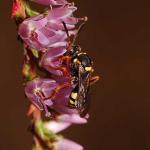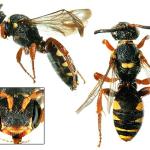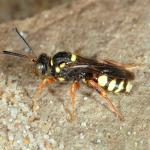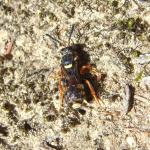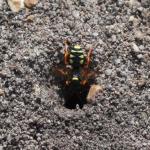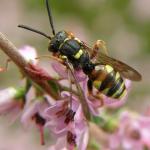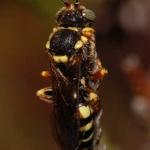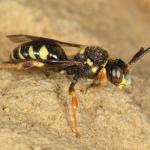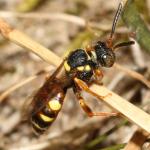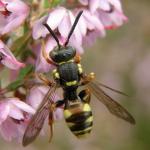Nomada vaga Panzer, 1798; Nomada solidaginis Panzer, 1799; Apis picta Kirby, 1802; Apis rufopicta Kirby, 1802; Nomada fennica Alfken, 1924.
This is a medium-sized cleptoparasitic bee which is yellow and black, although some females may be red, yellow and black. The bees can be very obvious on some heathland sites, being more readily found than their hosts (bees of the Andrena denticulata group).
Distributed throughout England, Wales and the Isle of Man, although more common in the south. Also recorded from the Isles of Scilly and the Channel Islands. It is local in Europe, where it is considered to be a northern species which becomes scare towards the south of Europe. As with two of its most frequent host species, A. denticulata and A. fuscipes, there is concern over the status of this bee in Germany, it being accorded Red List V (Vulnerable), status.
This bee is not regarded as being scarce or threatened in Britain.
As its hosts have a wide range of habitat types in which they may occur, so N. rufipes is found in a similarly wide range of habitats. However, it is most frequently found on heathlands. There is a population on the calcareous grasslands of Salisbury Plain where the bee is associated with Andrena nitidiuscula
Univoltine: July to September
The female bee lays her eggs in provisioned cells inside the underground nest s of its hosts, which are bees of the Andrena denticulata group, and probably A. nitidiuscula (S.P.M. Roberts pers. comm)
Ragwort (Senecio jacobaea) and heathers (Ericaceae) are very frequently visited, although N. rufipes may be found at a much wider range of flowers than this.
None known.
Profile written: 2006
Updated 22/12/2011


